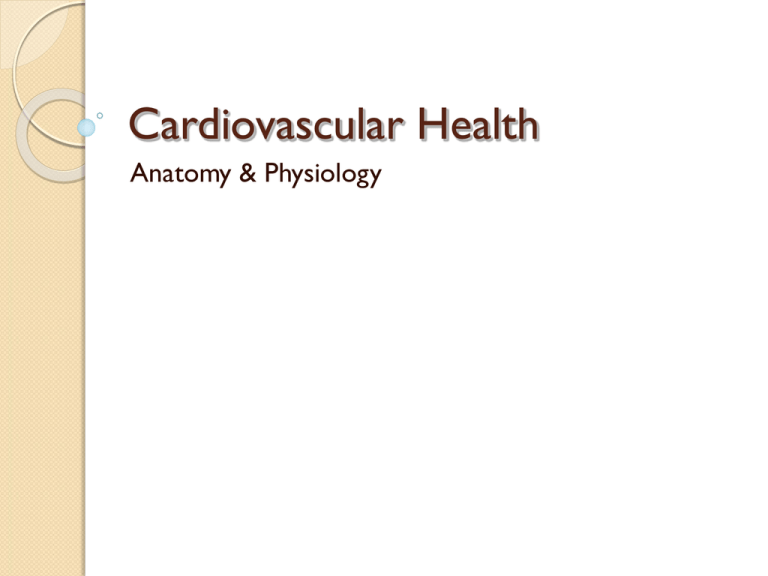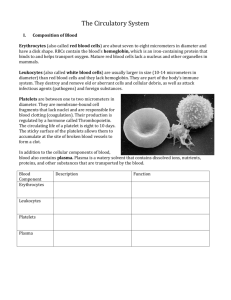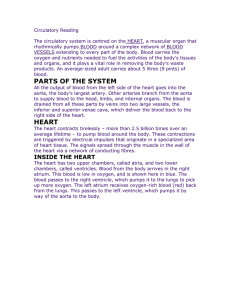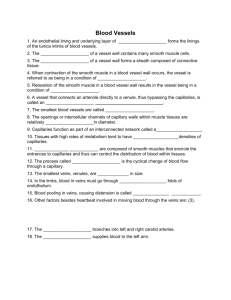Cardiovascular Health Anatomy & Physiology
advertisement

Cardiovascular Health Anatomy & Physiology Cardiovascular Health “Cardio” refers to the heart ◦ Heart is a muscle ◦ Responsible for pumping blood to the body’s tissues “Vascular” refers to the blood vessel system ◦ Responsible for delivering blood to the body’s tissues ◦ Three main blood vessel types ◦ Blood vessels might be thought of as the body’s plumbing system The Blood Vessel System Arteries ◦ Arteries deliver blood from the heart to the body’s tissues (including the heart) ◦ As arteries continue, they branch off into smaller vessels - arterioles Capillaries ◦ As arterioles branch off and become smaller, the blood vessels become capillaries ◦ Structured very simply so nutrients and wastes can be exchanged in the body’s tissues The Blood Vessel System Veins ◦ Veins take blood from the body’s tissues and return it to the heart ◦ As capillaries lead away from tissues, they merge and become larger venules ◦ As venules continue to lead blood away from tissues, they merge and become larger veins The Blood Vessel System The Heart Upper chambers: atria ◦ Left atrium ◦ Right atrium ◦ Think “opposite” (right is left, left is right) Lower chambers: ventricles ◦ Left ventricle ◦ Right ventricle Anatomy of the Heart Atria Ventricles Aorta Pulmonary Artery Pulmonary Vein Vena Cava Blood Flow (PBS’ Map of the Heart) Blood Flow Through the Heart Heart divided in half by the septum ◦ Left side Pumps oxygenated blood to the body Via aorta ◦ Right side Pumps deoxygenated blood to the lungs Via pulmonary artery The Heart’s Electrical System SA Node ◦ Begins electrical impulse AV Node ◦ Impulse moves from SA Node to AV Node Impulse continues into heart’s ventricles Heart contracts, based on electrical signals Heart’s Electrical System View National Heart, Lung, and Blood Institute’s animation of the heart’s electrical system





